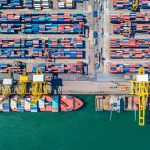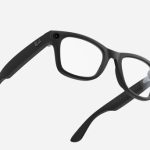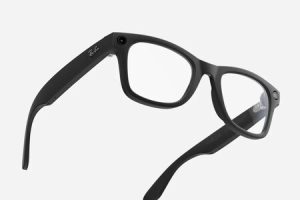Detecting marine litter from space and tracking its presence is now feasible, judging by the results of a new study
The study has been led by the University of Cádiz in Spain and the Institute of Marine Sciences (ICM) in Barcelona, dependent on the Higher Council for Scientific Research (CSIC) in Spain.
Until now, the amount of trash – especially plastic – on the sea surface was rarely high enough to generate a detectable signal from space. However, by using supercomputers and advanced search algorithms, the research team has shown that satellites are an effective tool for estimating the amount of debris in the sea.
To carry out the work, which has been funded by the European Space Agency (ESA), a six-year historical series of observations from the European Copernicus Sentinel-2 satellite in the Mediterranean was analyzed. In total, 300,000 images taken every three days with a resolution of 10 meters were scrutinized. The results reveal large agglomerations of garbage and waste within floating structures scientifically known as “trails” that can be several kilometers long and result from the convergence of marine currents and the effect of wind on the sea surface.
Although the satellite’s sensors were not specifically designed to detect garbage, its ability to identify plastic made it possible to create a map of the most polluted areas of the Mediterranean. This map shows the main garbage entry points from the continent and provides new and revealing data on the mechanisms that transport waste. The results indicate that the amount of floating plastic in the Mediterranean could cover an area of approximately 95 square kilometers during the period 2015-2021.
“Until now, searching for aggregations of garbage several meters in diameter on the surface of the ocean was like looking for needles in a haystack, since the formation of trails requires the presence of a large amount of garbage and little wind to prevent it from dispersing.” ”says Manuel Arias, ICM researcher and one of the co-directors of the work.
Map of the Mediterranean Sea with the locations of accumulations of marine litter detected thanks to the European Copernicus Sentinel-2 satellite. Each red circle represents an accumulation detected between June 2015 and September 2021 (in blue, the urban and industrial areas of the river countries). (Image: M. Arias / A. Cózar)
For his part, Andrés Cózar, from the University of Cádiz, also co-director of the study, emphasizes that “the relevance and meaning of the trails in terms of marine litter was until now an unknown,” and celebrates that automation through supercomputers and advanced search algorithms have made it possible to prove that it is possible to monitor the accumulation of marine litter from space in large areas and on a routine basis.”
Looking at future space missions, the research team suggests installing specific sensors for the detection of plastics on satellites. According to the study, this would multiply the capacity to detect plastic in the sea by twenty. Furthermore, this information could be compared with other environmental factors to improve knowledge of the mechanisms that transport plastic waste from land to sea, and better guide actions and regulations to combat this form of marine pollution that affects both biodiversity and fishing resources and tourism.
The study concludes that factors such as population density, geography or rainfall significantly influence the accumulation of garbage in the sea. Thus, for example, desert countries or cities contribute much less to the problem, while, in areas with more rainfall, especially when torrential rains occur, the accumulation of garbage resulting from emissions that occurred in the previous days and weeks is much greater.
Finally, the study reveals that, for the most part, garbage of continental origin is confined to the first 15 kilometers of sea from the coast, returning to it after a few days or months. “This confirms the notion that the distribution of garbage of continental origin and that generated by human activities directly in the sea behave and distribute in a different way,” Arias details in this sense.
The authors of the study illustrate the applicability of the new methodology with several real cases, such as the evaluation of the effectiveness of action plans against litter in the Tiber River in Rome (Italy), the identification of pollution sources related to transportation maritime in the Suez Canal (Egypt) or the use of satellite observations to guide cleaning tasks in the waters of the Bay of Biscay (Spain).
All in all, the results of the work show that monitoring marine pollution through satellites is feasible and promising for issues beyond plastic. For example, a sensor specifically dedicated to the detection and identification of floating objects could help address problems such as cargo loss on ships, oil spills, or search and rescue at sea.
In addition to the University of Cádiz and the ICM-CSIC, the work team is made up of researchers from ESA, ARGANS France in France, the Polytechnic University of Catalonia, the CNR (Consiglio Nazionale delle Ricerche, in Italy), the Technical University of Crete in Greece, ARGANS Ltd. (United Kingdom), AIRBUS Defense and Space (France), the JRC (Joint Research Centre) of the European Commission, The Ocean Cleanup (Netherlands), and ACRI-ST (France).
The study is titled “Proof of concept for a new sensor to monitor marine litter from space.” And it has been published in the academic journal Nature Communications. (Source: ICM/CSIC)










![[Img #72879]](https://thelatestnews.world/wp-content/uploads/2024/06/Monitor-marine-litter-from-space.jpg)


Add Comment